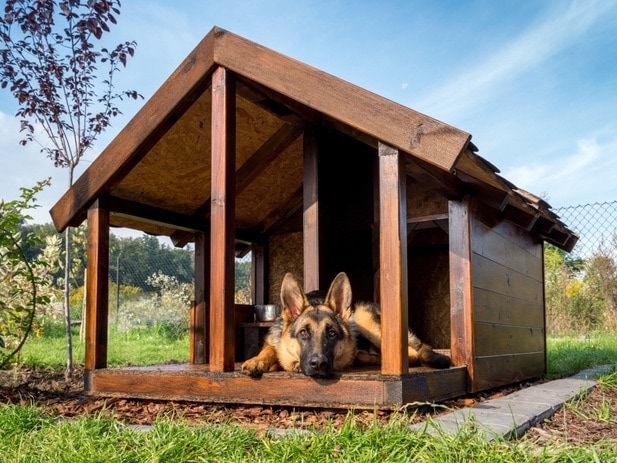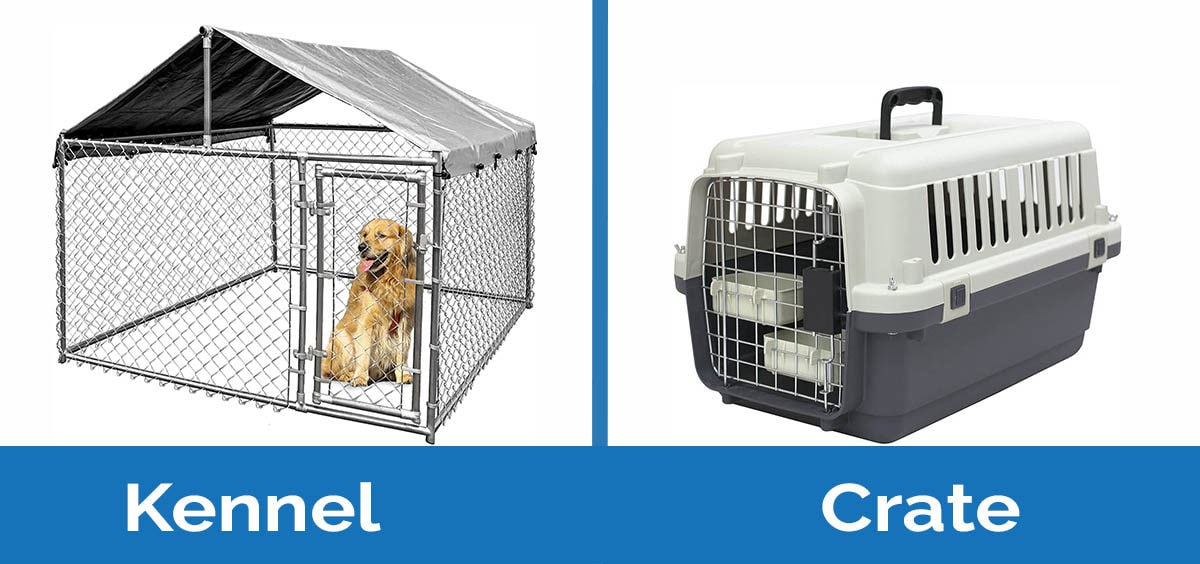Dog Crate vs. Kennel: The Differences (With Pictures)

Updated on

If you are reading this, you’re probably thinking of bringing a furry friend home soon. You’ll want to give your new dog the best care and ensure that they are comfortable in your home. So, should you use a crate or a kennel? Both serve as a place your dog can retreat for peace and quiet, just like your bedroom is your haven.
The Differences at a Glance:
While the terms are often used interchangeably, the two items are indeed different. To understand what’s best for your dog, it’s essential to know what each one is and its functions.
Kennel

A kennel has distinguishable features related to its functions.
Size:
A kennel is typically bigger than a crate. It should have enough space for a dog to play and exercise in comfort. Kennels are also built to fit more than one dog at a time.
Built for Permanence:
A kennel is primarily built as a permanent structure. Unlike crates, which come in collapsible forms and lighter materials, kennels are sturdier and made to last.
Designed for the Outdoors:
A kennel is meant to be placed outside the home. Some kennels, like the Lucky Dog Uptown Welded Wire Dog Kennel, come with a roof cover for when it’s too hot or when it rains.
Function:
A kennel is essentially a dog’s home. Your pup can spend hours in their kennel because it’s spacious enough for them to move around, sleep, and exercise.
Kennels are assumed to only be required when one has a badly behaved dog, but there are other reasons as well. Most kennels are also aesthetically pleasing, so you can get one that looks great in your backyard.
Aesthetics aside, kennels allow for sunlight and fresh air, which your dog will enjoy more than when in a traditional wooden dog house. Kennels are also less enclosed and more spacious, which means your dog is unlikely to feel abandoned, claustrophobic, or anxious.
 The Crate
The Crate

Here are the distinguishing features of the crate.
Movable:
Unlike the kennel, which is built for permanence and is sturdy, crates tend to be lighter in weight to allow a dog owner to carry their dog around in it. Crates also have collapsible options to make it easier to move them from one spot to the other. Take a look at a few collapsible crates here.
A crate can be placed in the living room during the day and then moved to the bedroom at night so dog and owner can sleep near each other.
Indoor Use:
Crates are used indoors for pups and bigger dogs.
Size:
Crates are generally smaller than kennels and only have room for one dog. While a dog can turn and sit up inside a crate, they don’t have enough room to exercise or play.
Function:
A crate is not meant to be a dog’s permanent residence. Instead, a dog owner uses it to house-train a dog and for similar scenarios.
If you prefer to travel with your dog, a crate is not only required, but it’s a safe, comfortable way to do so.
 In Summary
In Summary
While the terms “kennel” and “crate” are used interchangeably, the two are quite different.
Start by figuring out what your needs are before you begin your shopping to determine what will work best for you. Whichever one you go with, ensure that it’s big enough to fit your dog, it’s easy to clean, and it’s durable.
- See Also: Best Dog Crates for Puppies
Featured image credit: Amber Sallot, Shutterstock


 The Crate
The Crate In Summary
In Summary








